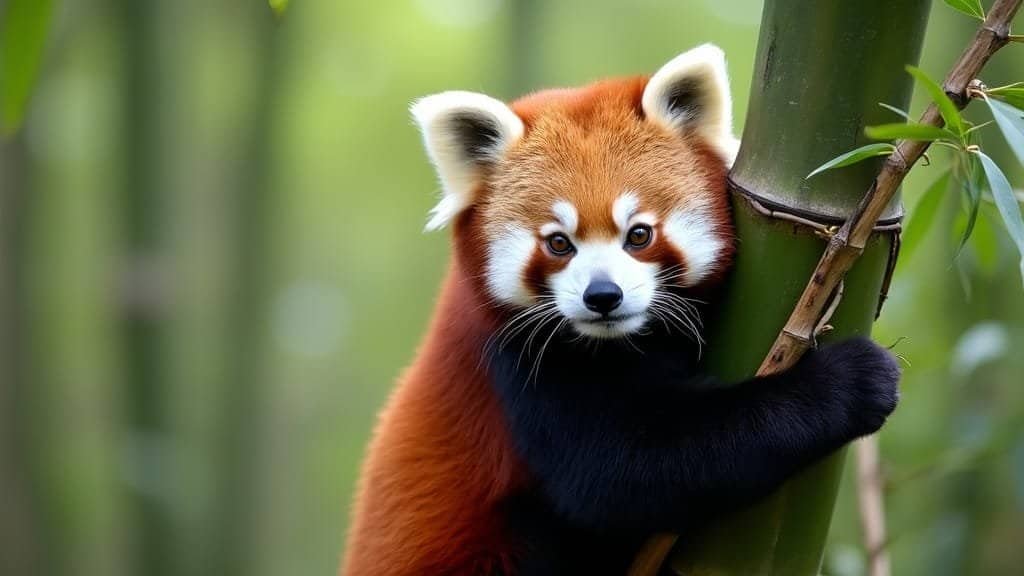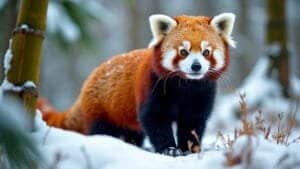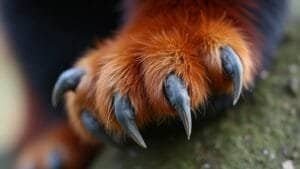The red panda’s paws are perfectly adapted to the challenges of its cold, mountainous habitat. With semi-retractable claws, fur-covered soles, and flexible ankles, these unique features enable red pandas to climb trees, walk on snowy terrain, and manipulate bamboo with ease. These adaptations are vital for survival in the high-altitude forests of the Himalayas, where temperatures often drop below freezing, and food sources are scarce
In this article, we’ll explore the physical characteristics of red panda paws, how they support survival in their environment, and the evolutionary traits that make them exceptional climbers and foragers
Unique Features of Red Panda Paws
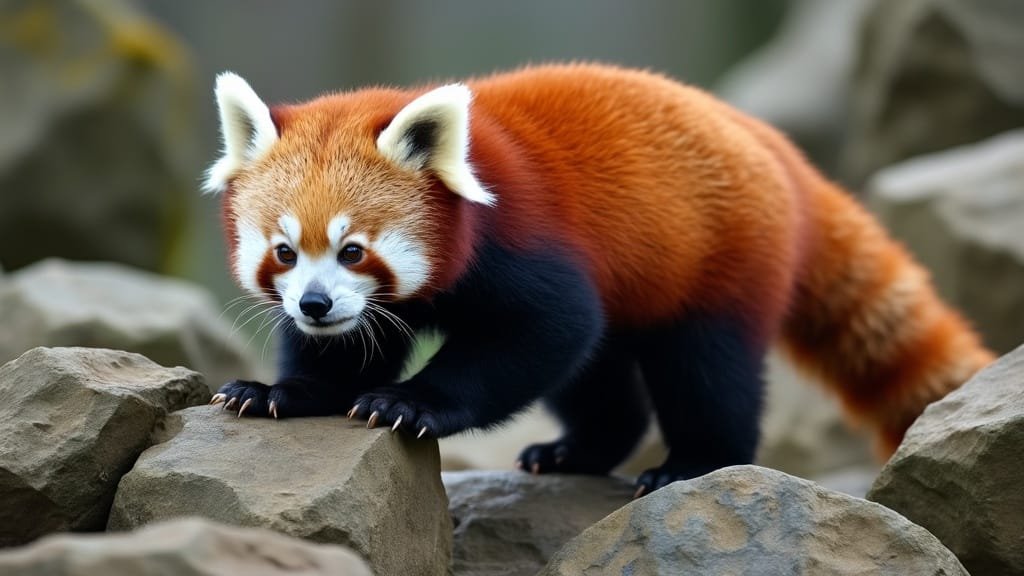
The red panda’s paws are perfectly designed for survival in their cold and arboreal environment. With semi-retractable claws, fur-covered soles, and remarkable flexibility, these features help red pandas thrive in the forests of the Himalayas
Semi-Retractable Claws for Climbing
The semi-retractable claws of red pandas are specialized for gripping tree bark and branches. These claws allow them to climb with precision and securely maneuver along narrow or slippery surfaces. Unlike fully retractable claws seen in cats, the claws of red pandas remain partially extended, ensuring they are always ready to grasp their environment
Research by Yonzon et al. (Biological Conservation, 1987) highlights that these claws are instrumental when red pandas feed on bamboo, often in hard-to-reach tree canopies. Additionally, the claws enable the red panda to balance effectively while navigating the complex arboreal terrain of their forested habitat
Fur-Covered Soles for Insulation
The thick fur covering the soles of red panda paws provides insulation against freezing temperatures. This adaptation is essential in the Himalayan mountains, where icy and snowy surfaces are part of their daily environment. By preventing direct contact with cold ground, the fur helps retain heat and keeps their body temperature stable
The fur also improves traction, reducing the risk of slipping on wet tree bark or icy terrain. According to Pradhan et al. (Journal of Mammalogy, 2001), this feature allows red pandas to move comfortably across snow-covered landscapes, ensuring they can forage and remain active throughout winter
Flexible Ankles and Their Benefits
Red pandas have uniquely flexible ankles that can rotate outward. This adaptation enables them to climb down trees headfirst, a rare ability among mammals. Climbing down headfirst not only improves their ability to navigate their environment but also enhances their escape routes when predators are present
Roberts and Gittleman (Mammalian Biology, 2020) describe how this flexibility, combined with their sharp claws, allows red pandas to efficiently move between the canopy and the ground. This agility provides them with a significant advantage when traversing trees or evading predators in their habitat
For further details on the physical features of red panda paws, refer to the Red Panda Network’s resource
How Red Panda Paws Support Survival
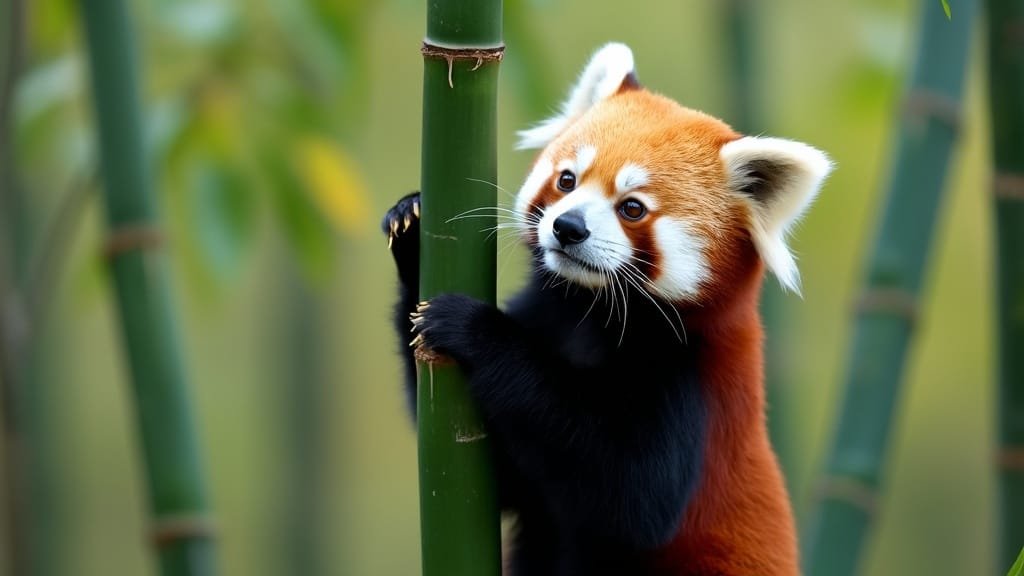
The red panda’s paws are essential for its survival in the cold, mountainous forests of the Himalayas. These paws allow red pandas to navigate their environment, find food, and adapt to harsh conditions
Climbing and Descending Trees Safely
Red pandas spend most of their time in trees, using their semi-retractable claws and flexible ankles to climb with precision. These adaptations enable them to move securely across narrow branches while foraging for bamboo or escaping predators
The ability to descend trees headfirst is particularly beneficial. By rotating their ankles outward, red pandas can firmly grip the tree trunk with their claws, allowing them to descend quickly and maintain control. This skill, observed by Yonzon et al. (Biological Conservation, 1987), provides red pandas with an efficient way to retreat to the ground or escape threats
Walking on Snowy and Icy Terrain
The fur-covered soles of red panda paws act as insulation against cold surfaces, allowing them to walk on snow or ice without losing body heat. This adaptation is critical during the winter months when the ground in their habitat is often blanketed in snow
In addition to providing warmth, the fur enhances traction, preventing the red panda from slipping on icy or wet terrain. Roberts and Gittleman (Mammalian Biology, 2020) noted that the combination of fur and claws allows red pandas to move confidently across snow-covered landscapes, ensuring they can forage and stay active even in extreme conditions
Manipulating Bamboo During Feeding
Red pandas rely heavily on bamboo as their primary food source, and their paws play a vital part in handling this tough plant. The claws enable them to grip bamboo stalks firmly, while their dexterous paws allow them to strip leaves and hold food while sitting upright
This behavior, similar to that of raccoons, highlights the precision and adaptability of red panda paws. The ability to manipulate bamboo efficiently ensures they can extract the nutrients they need from this low-calorie food source, an essential factor for their survival
For additional insights into how red panda paws aid their survival, visit the Sciencing article on red panda adaptations
Evolutionary and Comparative Adaptations of Red Panda Paws
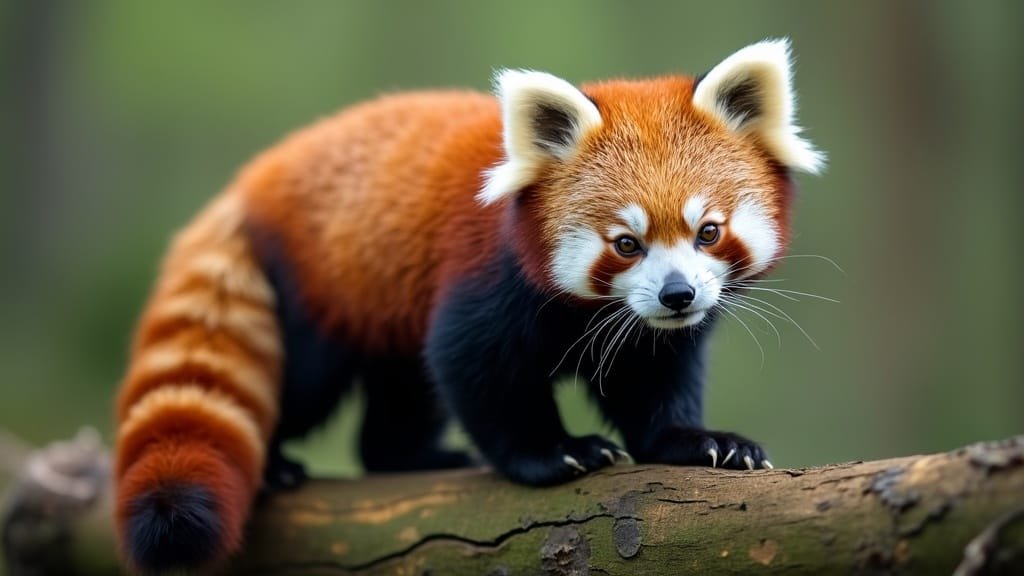
The red panda’s paws have evolved over millions of years to help them thrive in a cold, mountainous, and arboreal environment. These specialized adaptations not only support survival but also distinguish red pandas from other mammals with similar lifestyles
Evolution of Paws for Arboreal Living
Red pandas have adapted to life in the trees with unique features that enhance their climbing abilities. Their semi-retractable claws and flexible ankles allow them to move with agility in dense forest canopies. These traits make red pandas particularly adept at navigating narrow branches, where their primary food source, bamboo, is often found
According to Wei et al. (Journal of Mammalogy, 2014), the evolutionary development of flexible paws enabled red pandas to exploit their arboreal niche while avoiding competition with larger ground-dwelling herbivores. This specialization has allowed them to thrive in environments where tree-dwelling is essential for accessing food and evading predators
Role of Paws in Predator Avoidance
The physical features of red panda paws are instrumental in helping them avoid predators such as snow leopards, martens, and birds of prey. The combination of sharp claws, fur-covered soles, and flexible joints enables them to escape threats by climbing trees or descending quickly when necessary
Choudhury (Journal of Zoology, 2001) observed that red pandas frequently rely on their climbing abilities to retreat to the safety of high branches, where predators cannot easily follow. Their paws provide the grip and precision needed to execute these rapid movements, ensuring their safety in dangerous situations
Comparison of Red Panda Paws to Other Mammals
When compared to other arboreal mammals, red panda paws stand out due to their combination of traits. Unlike raccoons, which lack fur-covered soles, red pandas are better equipped to handle icy and snowy surfaces. Their flexibility also surpasses that of tree-dwelling primates, which are adapted for warmer climates and lack the insulating fur needed for cold habitats
The red panda’s paws share some similarities with Arctic foxes, which also have fur-covered soles for insulation. However, red pandas’ semi-retractable claws and flexible ankles give them an advantage for climbing, a behavior not seen in Arctic foxes. Roberts and Gittleman (Mammalian Biology, 2020) concluded that the red panda’s paws are uniquely suited to their ecological niche, blending features for climbing, insulation, and grip
For a broader perspective on the evolutionary development of red panda paws, refer to the Current Conservation article
